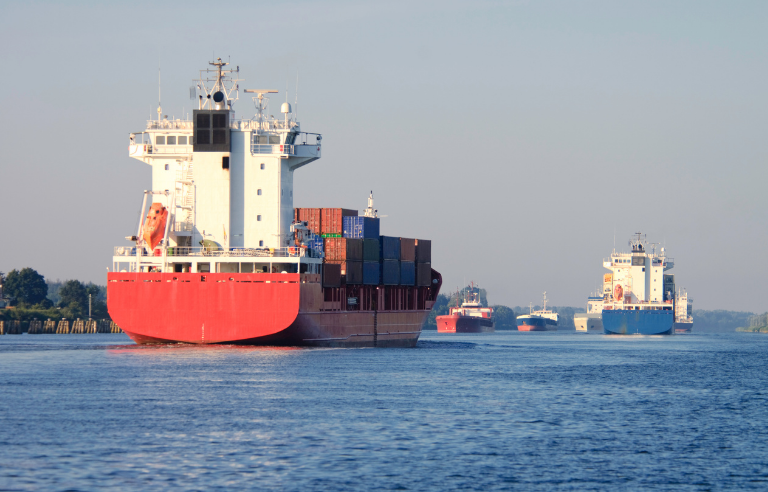Navigating the Ongoing Supply and Freight Shortages
 The supply and cargo chain is a factor that has affected us all in the last year due to the impact of the virus. Most noticeably, the time it takes to ship almost anything overseas has gone up dramatically. However, costs have also become seriously inflated, to almost inconceivable levels by the stresses placed on the supply chain and shipping industry.
The supply and cargo chain is a factor that has affected us all in the last year due to the impact of the virus. Most noticeably, the time it takes to ship almost anything overseas has gone up dramatically. However, costs have also become seriously inflated, to almost inconceivable levels by the stresses placed on the supply chain and shipping industry.
The reality is that if one part of the chain is affected, it ends up affecting the rest of the system sooner or later. That’s why we are still seeing a wide range of consequences on our industry and personal lives. In this article, we will review some of the causes and consequences of this situation.
The Costs of Importing Goods have Skyrocketed
The first repercussion of the pandemic’s impact on shipping is that the price of the transport of merchandise and freight has skyrocketed and correspondingly the prices of products have risen. This increase has been drastic from one year to the next. A key fact in this situation is that approximately 80% of the products we consume worldwide are transported by sea. So we are talking about a broad effect applying to a considerable number of the products that we consume on a daily basis. Someone has to pay for those increases with increased costs and in the end this always affects consumers. Companies already see how their suppliers have consistently increased the price of their products.
There Is a “Container Crisis”
A large part of what caused this crisis is the shortage of shipping containers in Asian ports, which translates into little space to transport products from Asia to the West and skyrocketing freight prices. Some exporters had to wait weeks for containers to be available to move their cargo and this pushed up their price.
This does not mean that these containers do not physically exist, what has happened is that they are not where they should be. Hundreds of ships with thousands of containers arrived at their destination ports, but these could not return due to the pandemic, so many of those containers are piled up in European and American ports. This in turn has created congestion and saturation in these ports as containers pile up faster than they can be accepted at foreign ports due to pandemic-related restrictions.
Traffic Jams In Major International Ports
Our last problem directly leads to this problem. The same chain-reaction leading to market fluctuations, has caused an unprecedented congestion of ships waiting ust off shore in long queues to offload their cargo, and this has generated bottlenecks in world seaports. While the pandemic has aggravated this directly with quarantine requirements and brief shut downs, the pile-up of shipping containers is also a major factor, as there’s very limited space for unloading cargo in addition to staffing difficulties and virus-related restrictions.
Temporary Closure Of Ports
Strict measures were put in place in China to prevent further waves of the virus. Thus, when an outbreak is detected somewhere, major ports close, production slows down, this then causes a delay in the delivery of merchandise. This same series of events happens in other large producer nations, such as India, Vietnam, and Bangladesh. There is a domino effect every time a factory or port closes; inevitably it leads to a consumer like you or us being left without the ability to consume that product.
Shortage of Boats
Shipping companies did not have additional ships available to handle the wave of freight, so even the limited supply of shipping containers available could not be used effectively.
What This Means For Us
Even as the authorities of each country propose and apply solutions in order to alleviate these problems, such as "fees for excess permanence of containers," there is still a great deal to be resolved in order to restore the normalcy in international freight transport and prices.
At FRC Global, we propose that honest, fast and continuous communication between steel suppliers and interested clients is the best way to deal with this situation, and we are leading by example.
In order to keep our clients updated, FRC Global created a newsletter on the evolution of the cost of transportation, which will help create contingencies to deal with delays. Also, as a customer, it is imperative to plan your orders in advance so that you can accommodate any unexpected delays. Be sure to contact us well before you run out of safety net stock so we can make sure your shipment arrives in time
Choosing vendors committed to being transparent with you regarding cargo container shortages, expected arrival times, and other shipping-related factors is crucial to navigate through this difficult time.
FRC Global remains on top of the latest shipping trends, freight container shortage news, and any other factors that can result in delayed shipping and deployment of goods. We will continue to be as transparent and forthright with all shipping information, so our clients will be able to plan accordingly.